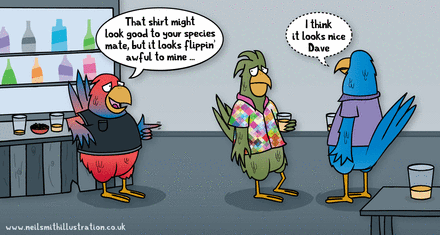Birds around the world rely on colourful plumage to identify and assess their kinsmen. Birds see colour using four colour visual pigments in their cone cells in addition to a rod pigment that is used in dim light vision. Each of these visual pigments is made up of one of five opsin proteins (LWS, SW1, SWS2, RH2 and RH1) and a chromophore, where each pigment absorbs a different range of light wavelengths. In some non-avian species the spectral sensitivities of these visual pigments have co-evolved with body colour and differ between individuals of the same species. Curiously, however, to date all studies suggest that the visual pigments vary little within the avian class, and even less within a particular species. To investigate further, Ben Knott, a researcher at Deakin University, and Wayne Davies, from the University of Western Australia, both in Australia, and their colleagues turned to the unusual parrot Platycercus elegans whose plumage can range from red to yellow (p. 4454).
To begin with, the team characterised the wavelength sensitivity of the different visual pigments, by isolating rod and cone cells expressing the five different pigments. As expected, the five different pigments, absorbed light from the ultraviolet to the red ends of the visual light spectrum.
Next, the team moved on to characterising the opsin proteins in more detail and sequenced the mRNA transcripts of the five opsins. As expected, three out of the five (LWS, SWS1 and SWS2) did not vary very much and were similar to opsins found in other bird species. However, the RH1 and RH2 opsins were noticeably different from the equivalent opsins in other birds, with proteins that would have extended carboxyl termini. What's more, the RH2 protein varied considerably, with mRNA transcripts encoding short, medium and long variants. The team suspect that by controlling the size of the RH2 opsin protein, parrots may be able to tweak the spectral sensitivity of the cone cell containing the RH2 visual pigment, thereby aiding them to see better in the yellow and red parts of the spectrum. Although the team still need to test this theory, it seems that there is more variation in avian colour vision than hitherto thought.
